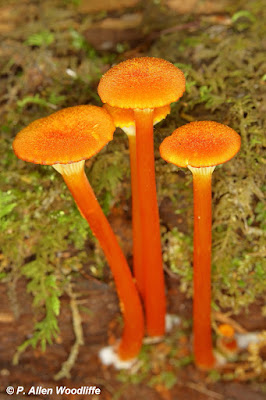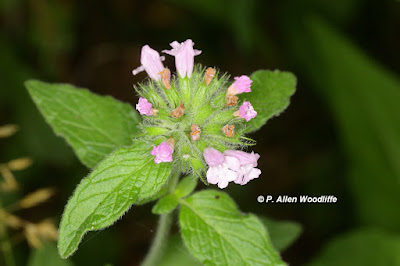I thought it was time to give the Sandhill Cranes header a rest, and this new header features a beautiful day-flying moth called a Nessus Sphinx. It was quite active visiting some Common Milkweeds in my yard, so I snapped a bunch of photos, as you might expect :-).
In spite of the greater heat and humidity of late, it is still worth getting out from time to time. A popular plant to see and photograph these days is Butterfly Milkweed.
This site is at the north end of Rondeau, immediately across from the campground. This photo was taken several years ago, and although it had grown rather shrubby of late, it has been burned in the spring over the past 2-3 years, so it getting more open again, and the Butterfly Milkweed is fairly abundant.It is always worth paying attention to other things that are around. On one occasion several years ago when I was photographing this patch of Butterfly Milkweed, I caught a glimpse of a large butterfly visiting a nearby patch, and realized it was not a species I was familiar with. So I grabbed my other camera and got this one photo before it took off. I tried to follow it, but it could fly much quicker than I could get through the vegetation!
Once I got home and checked to see what it was, I discovered it was a Gulf Fritillary, and it was the first photographed/confirmed individual for Canada! You can see the wings are a little tattered, so it likely got blown off course via a southerly wind, and ended up at Rondeau. One just never knows what might be out there waiting to be found...
Something to be aware of regarding these prairie/savanna habitats at this time of year, is the presence of something called Chiggers. They are the larval stage of a type of mite. They are very tiny creatures, which you can barely see even with a hand lens. They will get onto clothing, and eventually on your skin, and a few hours after they catch on to you, you may notice some little red itchy spots! They aren't known to spread any disease like deer ticks that can pass Lyme Disease on, but they can be quite itchy for a few hours. Some people react more strongly to them than other folks, but it is worthwhile to be aware of them. Something like calamine lotion will alleviate the itch fairly quickly in most cases.
This sandy prairie site is a good spot for other prairie/savanna plants. A common but rather small one is Pale-spiked Lobelia, and it, too, has been in flower for a few days.
The flowers can be almost pure white, or have a distinct tinge of blue.
And another prairie species, mainly towards the north and open sections of the Marsh Trail is this next one, Tall Meadow Rue.....
.....and Wild Bergamot, which also grows in prairie-like settings.
A close relative, but more woodland than prairie, is Scarlet Beebalm. It is quite uncommon.Some other prairie/savanna species, although not found at Rondeau, include Foxglove Beardtongue...
 |
| Foxglove Beardtongue |
...and Climbing Prairie Rose, which when found often is climbing up a small open tree. I have even seen this species growing along roadsides in Chatham-Kent, which of course are quite open and have dead trees so provide a good climbing medium.
Next is a plant that is quite rare in Ontario, called False Indigo Bush, which normally grows in prairie/savanna habitat. It is not native to Rondeau, but was likely intentionally planted by someone who may have been the same person who planted the endangered Prickly Pear Cactus back in the early to mid 1990s, and is found in the same general area.
A few other things to feature on this post, include a couple of fungi such as this Goblet Waxcap...
...and one with only a Latin name, called Crepidotus nephrodes.Another plant which can grow in a variety of places, including the edges of woodlands, is Common Selfheal.This next plant is a shrub, and like many others growing along trails and roadsides, is not native. It is Common Privet.If you would like to subscribe, or unsubscribe, to Nature Nuggets, send an email to: prairietramper@gmail.com
























No comments:
Post a Comment